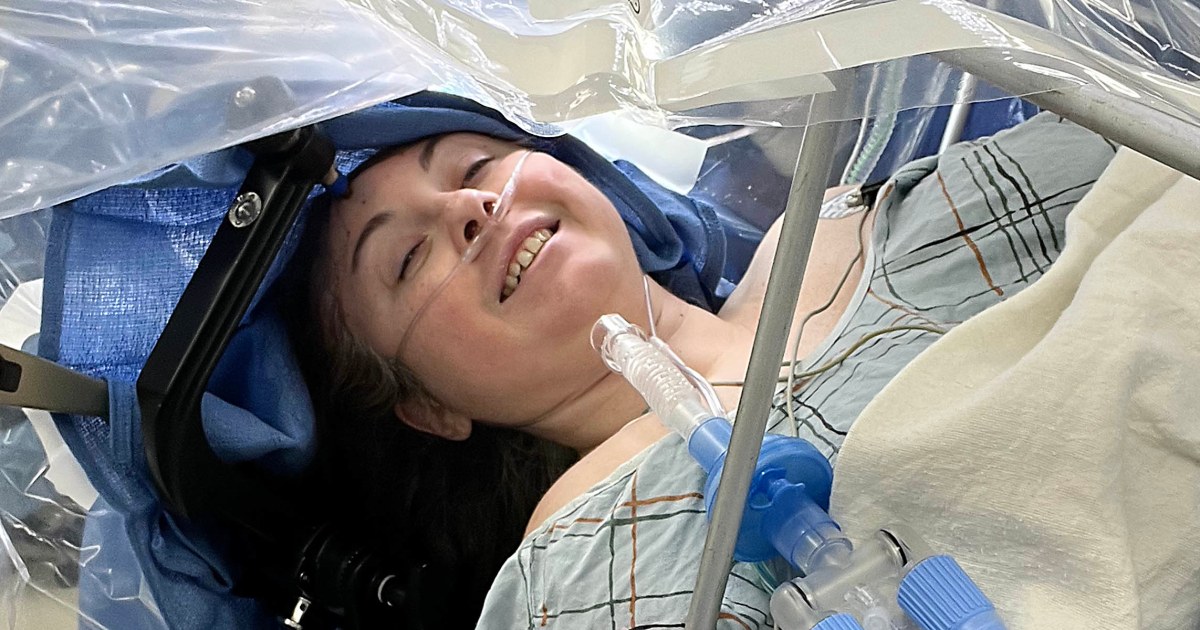health
My health
This is how surgery is performed today through the nose without touching the knife
Endoscopic surgeries are an alternative to medical procedures that involved large incisions as well as many risks and inconveniences.
Professor Eitan Sudri, director of the unit for sinus surgery and the base of the skull at Rabin Medical Center, expands on the subject.
Tags
brain
Nose
analysis
Professor Eitan Sudri, Zap doctors
Thursday, 17 June 2021, 08:37 Updated: 08:40
Share on Facebook
Share on WhatsApp
Share on general
Share on general
Share on Twitter
Share on Email
0 comments
Endoscopic surgery through the nose.
Replaces the old surgeries (Photo: ShutterStock)
With the development of medicine we are seeing more and more surgeries being performed without using a knife or making incisions that will turn into painful scars that will require a long recovery. Endoscopic surgeries, for example, were first developed to treat sinusitis that did not respond to conservative treatment, with sinus surgery dilating the sinuses and clearing the inflammation. Over the years, along with significant technological advances as well as a deeper understanding of anatomy and the development of new surgical techniques there has been tremendous progress in the field. This surgical approach can now be treated even in complex cases such as diseases of the nose and sinuses including benign and malignant tumors of the sinuses as well as treating problems beyond the boundaries of the sinuses.
Today, endoscopic surgery through the nostrils is also performed for diseases and tumors of the base of the skull to correct a leak of cerebrospinal fluid to the nasal cavity, tumors of the pituitary gland and other tumors in the area of the center of the skull and upper cervical spine processes.
In addition, surgeries with this approach can also be performed to block the tear ducts, and diseases of the eye socket that cause eye ballet.
More on Walla!
How to use a defibrillator in an emergency?
To the full article
Endoscopic surgery has several benefits from both the medical process and the patient aspect.
From the patient's point of view, the operation is performed through the nostrils - which saves scars on the face and skull as well as other complications that involve non-endoscopic approaches.
Also the duration of hospitalization is significantly shorter and recovery is easier.
More by Prof. Sudri on the Doctors website: Bleeding from the nose: the causes and methods of treatment
More on Walla!
Dental 'Saddle' Implants - Who is it for?
What does a genetic chip test in a fetus reveal (and what does not)?
B-Cure Laser - Does It Really Help Back Pain?
In terms of the procedure itself, the endoscopic approach allows the use of a camera that transmits a sharp image to the screen so that the surgeon can magnify the details that cannot be seen in other ways and allows for more accurate and safe analysis.
Beyond the sinus area there are important blood vessels and nerves that should be avoided, so in many cases it is common to use these surgeries also in navigation systems that serve as intraoperative GPS, allow greater accuracy in surgery and help reduce the damage to these structures.
Allow for greater accuracy in surgery and help reduce damage.
Woman's nose (Photo: ShutterStock)
Here are examples of conditions that can now be solved through endoscopic surgery through the nostrils:
Leaking of cerebrospinal fluid Leaking of cerebrospinal fluid
Leakage is attributed to conditions that cause damage to the bone and membranes separating the nose and sinuses and brain and consequently there is leakage of fluid around the brain Leakage of aqueous fluid from one nostril mainly in forward bending situations.
These conditions can occur as a result of a severe head injury, complication of head or sinus surgery or sometimes even spontaneously. This is a dangerous condition that can cause meningitis and requires clarification and diagnosis that includes a number of tests including imaging tests of the sinuses and brain in order to locate the location of the leak as well as an examination of the fluid itself. After verifying the condition and locating the source of the leak, endoscopic surgery can be performed in most cases through the nostrils to close the hole through which the leak with relatively quick and easy recovery to surgeries previously performed through the skull.
Treatment of benign and malignant tumors in the brain
at the base of the skull and even in the meninges may develop benign and malignant tumors (such as meningiomas and chordomas) as well as, tumors in the pituitary gland (pituitary gland), a gland that is in the center of the skull and responsible for hormone secretion.
Benign tumors in this gland can cause over-secretion of hormones or hormone secretions and may create pressure on the optic nerves and even impair vision.
This condition is detected through blood tests and MRI scans of the brain.
If drug treatment does not bring benefit, these tumors and other tumors in the area can also be operated on by endoscopic approach through the nostrils.
These surgeries are performed by a combined team of ENT surgeons and neurosurgeons.
Prevents unnecessary scars.
Woman's eye (Photo: ShutterStock)
Access to the eye sockets and the tear
ducts The
tears in the eye
naturally drain into the tear sac and from there through the tear duct to the nasal cavity so even when we cry there is a runny nose. Sometimes the tear duct is blocked and the blockage needs to be addressed by creating a bypass and draining the tears directly from the tear duct to the nose. Instead of making an incision through the skin between the eye and the nose to create the bypass, the surgery can be performed with an endoscopic approach through the nostril and the scar can be avoided.
Another case involving ballet of the eye is a condition that can be caused as a complication of disease of the thyroid gland. If conservative treatment fails the eye should be returned to its place in surgery. One way to do this is through endoscopic surgery that allows the eye socket to be reached through the nose and allow the contents of the eye socket to spread into the nasal cavity and thus return the eye to its place. This approach can also treat other infectious and tumor processes of the eye socket and thus save incisions around the eye.
In conclusion, endoscopic surgeries through the nostrils today replace in many cases surgical procedures that were previously performed through incisions in the face and skull and allow a safer and more accurate approach with a shorter and easier recovery - this also has very significant value for the patient from the health aspect and especially the psychological aspect.
The author is Professor Eitan Sudri, director of the unit for sinus surgery and the base of the skull in the ENT and head and neck surgeries, at Rabin Medical Center.
Share on Facebook
Share on WhatsApp
Share on general
Share on general
Share on Twitter
Share on Email
0 comments









